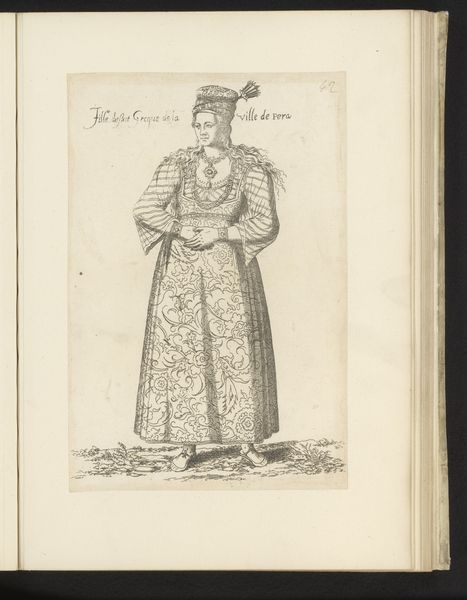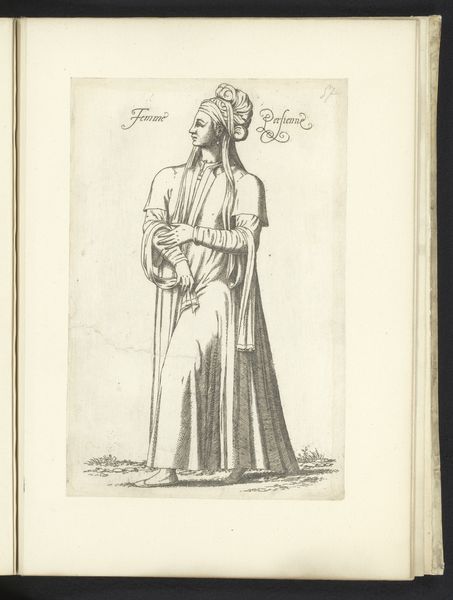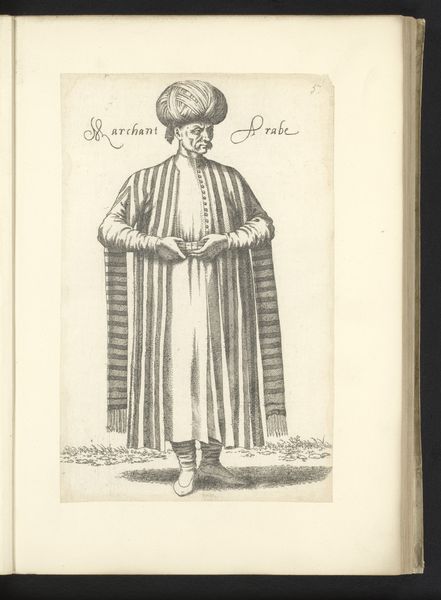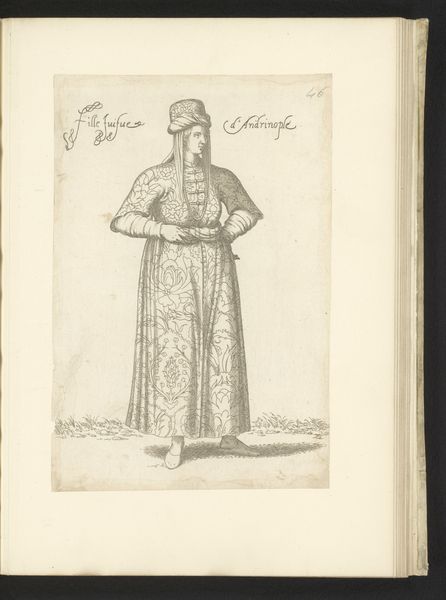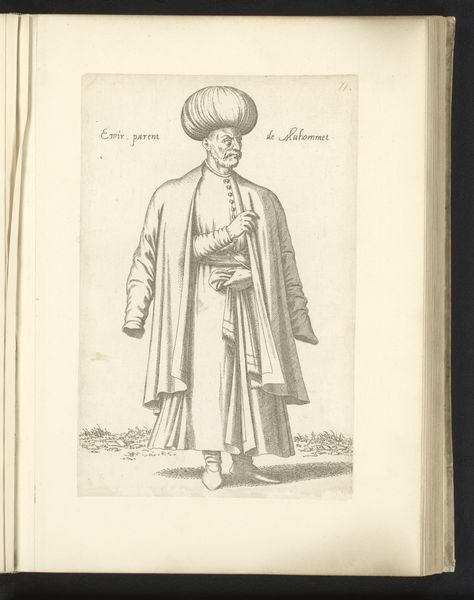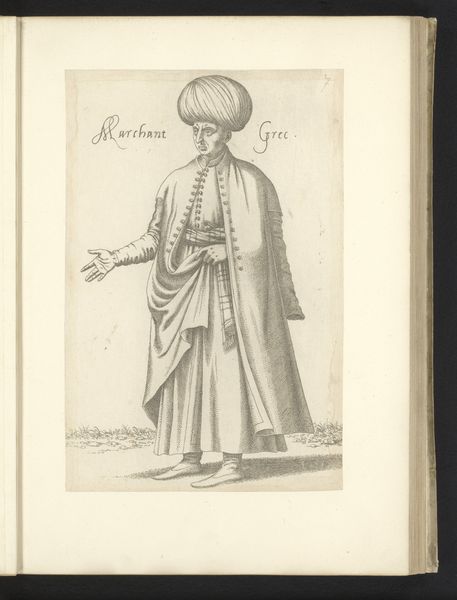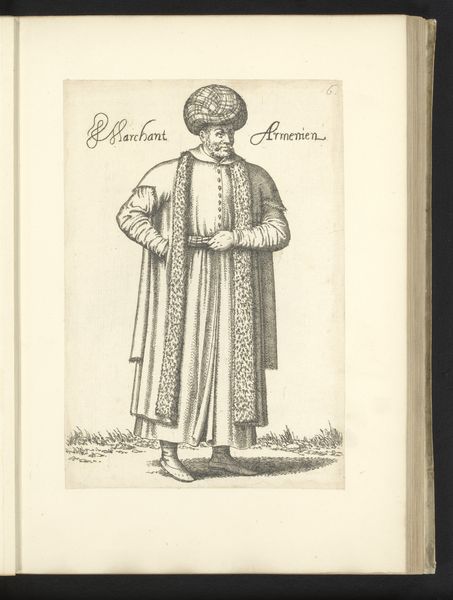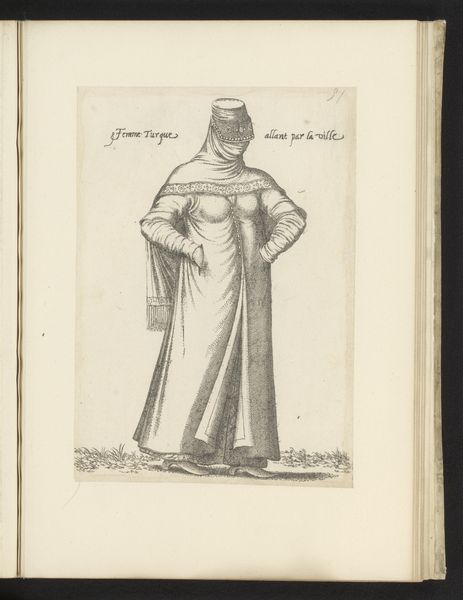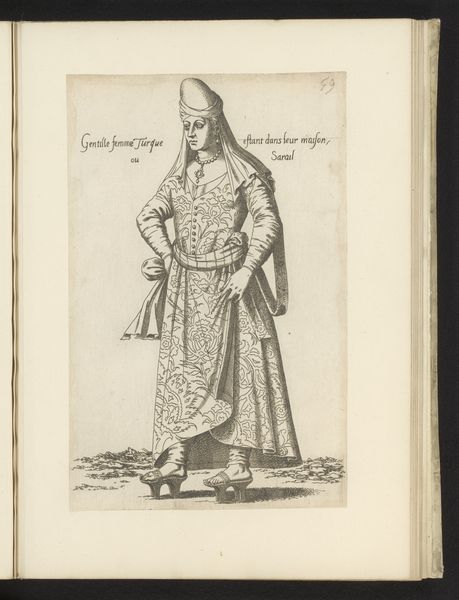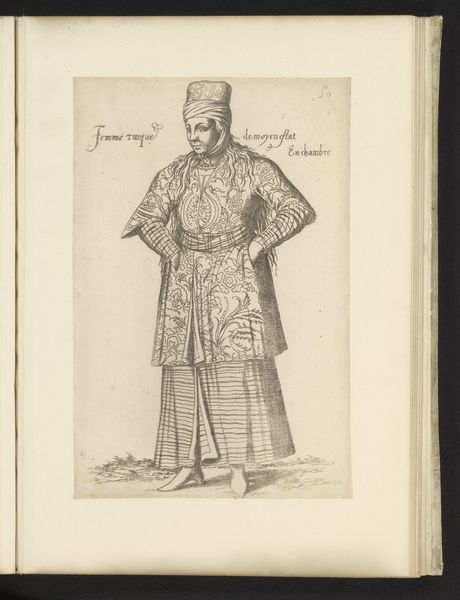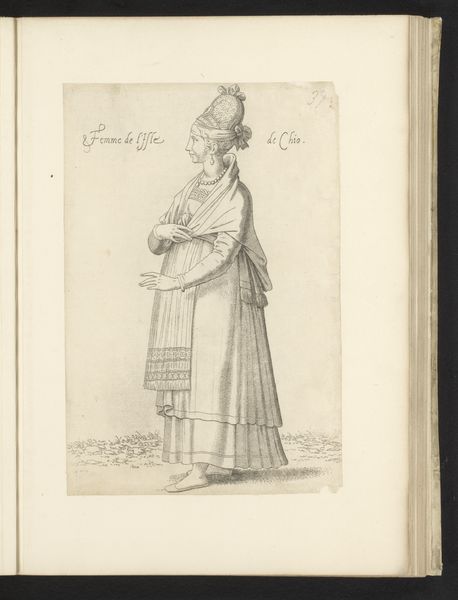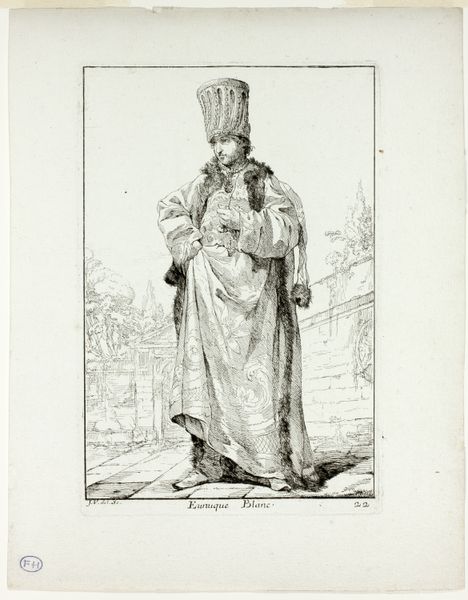
drawing, ink, pen
#
portrait
#
drawing
#
medieval
#
pen drawing
#
ink
#
pen
#
history-painting
Dimensions: height 270 mm, width 172 mm
Copyright: Rijks Museum: Open Domain
Curator: Look at this intriguing portrait titled "Joodse dokter," or "Jewish Doctor," created by Léon Davent between 1555 and 1568 using pen and ink. What's your initial response? Editor: Stark and precise. The composition is dominated by the figure's verticality, accentuated by the towering hat and the long lines of the robes. It has a sense of cool detachment. Curator: Considering Davent’s process, the ink and pen were likely quite coarse, immediately defining the detail within the overall representation of status and vocation, which can't be divorced from the socio-economic position. This would've situated both maker and the portrayed in specific relations to craft and production. Editor: The density of line work creates texture, implying the weight of fabric, the dryness of the beard. It reminds one of the graphic explorations in German Expressionism—though historically antecedent. Curator: Interesting, though in a 16th-century historical painting such as this, how much did materials influence these early forms of portraiture? What associations, in a material sense, did such drawings generate about craft, production, or skill? This portrait, therefore, speaks of the artist's station, patronage, and how those factors would’ve directly shaped this image. Editor: Agreed. Formally, though, consider how the sharp delineation and subtle tonal gradations suggest more than a simple representation. They evoke a psychological state, even within the limits of the medium. There is something inscrutable and profound here, a quiet defiance. Curator: But also, isn't it pertinent how the means of image production directly impacted reception and distribution, informing cultural understandings related to class and accessibility? How the artwork was disseminated directly affects any “profound” emotional impact. Editor: That’s relevant. However, the symbolic dimension—the composition, line, the considered balance—reveals inherent aesthetic qualities. It moves past straightforward illustration. The formal properties are undeniable. Curator: Okay, I acknowledge that I might need to think harder on your observation. My concern remains anchored in what surrounds art’s production. Editor: Fair enough. Regardless, seeing the interaction of the formal and material reminds us that images like these open conversations that bridge aesthetics and historical context.
Comments
No comments
Be the first to comment and join the conversation on the ultimate creative platform.
